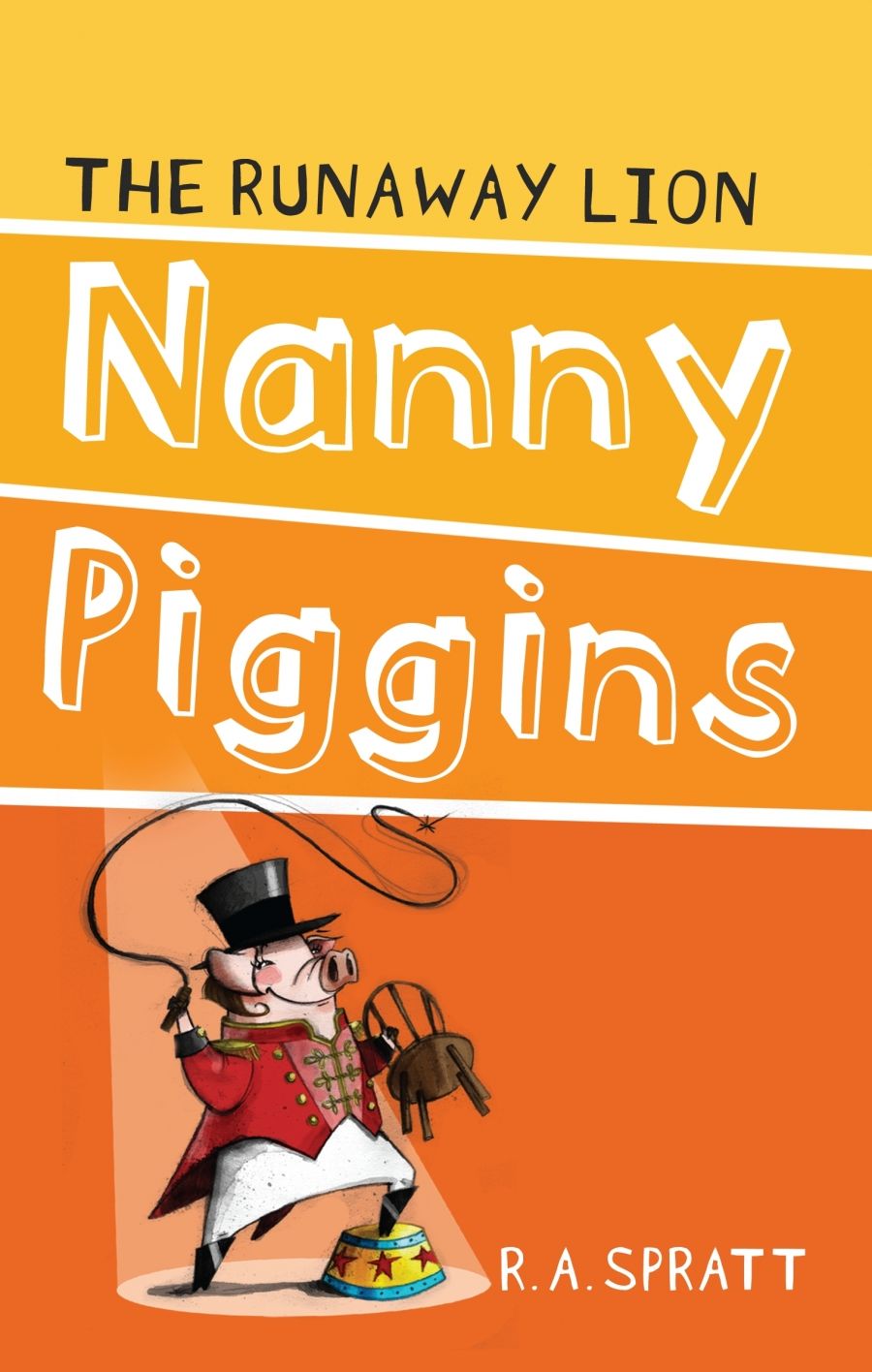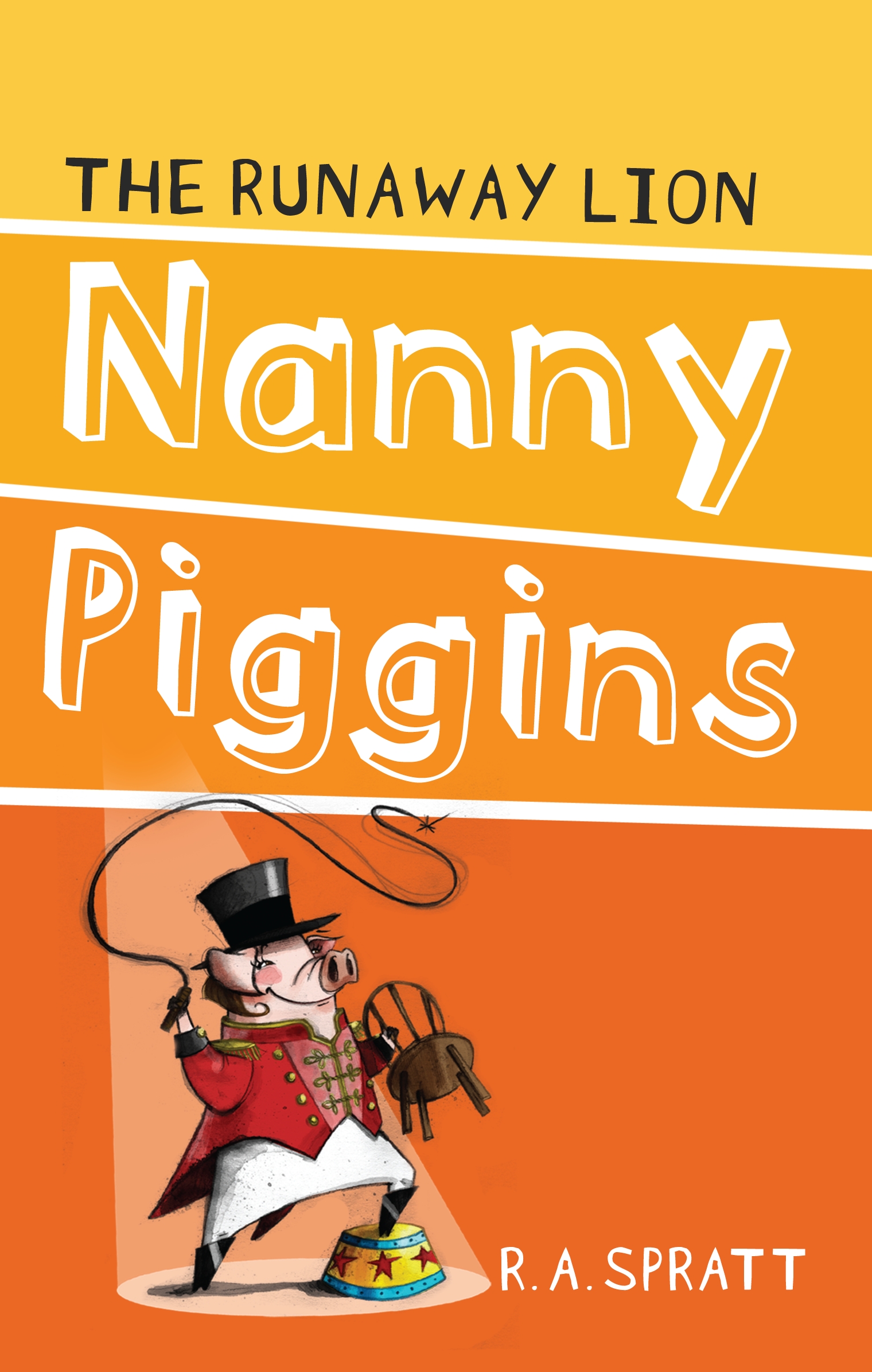
- Free Article: No
- Contents Category: Children's and Young Adult Fiction
- Review Article: Yes
- Article Title: More of the same
- Online Only: No
- Custom Highlight Text:
With series titles dominating the new releases, it would seem that every author’s (and illustrator’s) ambition is to find a character and a conceit that will have sufficient appeal to carry them successfully through multiple volumes. This is a particularly achievable ambition in children’s literature, where the target readership has a high tolerance for repetition, a loyalty towards favourite characters and a seemingly insatiable appetite for more of the same.
- Book 1 Title: Nanny Piggins and the Runaway Lion
- Book 1 Biblio: Random House Australia, $14.95 pb, 271 pp
- Book 1 Cover Small (400 x 600):

- Book 1 Cover (800 x 1200):

R.A. Spratt’s Nanny Piggins series is a collection of politically incorrect tales about a flying pig that, in the first volume, ran away from a circus and went to live with the Green family as their nanny. The three children, Derrick, Samantha and Michael, loved her instantly – and why wouldn’t they, when she enforces no discipline, holds no truck with school or education, and believes a balanced diet consists of chocolate and cake? But Mr Green, a mean-minded contracts lawyer, loathes her almost as much as he loathes his children. His last wicked plan to get rid of them was foiled in the second volume; now there is Nanny Piggins and the Runaway Lion (Random House Australia, $14.95 pb, 271 pp, 9781864719710), in which more characters from the circus turn up to join the Green menagerie, which already includes Boris, a dancing bear, who lives in the garden shed.
The new collection consists of eleven stand-alone stories, all of which will stretch your credulity, tickle your funny bone and make you think of Mary Poppins. P.L. Travers’s 1934 creation has obviously negatively inspired Spratt, who has simply turned that famous nanny’s ‘hip-hop, spit-spot’ of routine, cleanliness and selfless duty into anarchy, chaos and self-indulgence. While the tales are wildly inventive and amusing, the sheer number of sugary food binges had this reader longing for the appearance of a carrot, or something green and leafy. But stories featuring cakes and confectionery have always been popular with children, and it is easy to see the attraction of flouting authority and following your own desires. The character of Mr Green is more troublesome. It seems to me that if you are going to deprive your fictional children of a mother, then saddle them with a stupid, selfish, sadistic oaf of a father who constantly tries to rid himself of his offspring in the most appalling ways, the laughs might become a bit thin. Mary Poppins’s charges were secure within a loving family situation and a nanny who had their best interests at heart; the Green children are ashamed of their father, and Nanny Piggins seems to have a heart and eyes more often focused on chocolate and cake than on them. Book Four in the series will be published in October.
Stephen Giles was also inspired by an earlier children’s book – in this case, Aunt Jane’s Nieces (1906), by Edith Van Dyne, a pseudonym for Frank Baum – to create his (to date) two-volume series about three young Winterbottom cousins who are summoned to Sommerset Mansion so that their sinister old Uncle Silas can choose his heir. In Silas and the Winterbottoms (2009), he was permanently dispatched – or was he? That’s the premise of the second volume, The Vulture of Sommerset (Pan Macmillan, $14.99 pb, 388 pp, 9780330425643), in which Adele, Isabella and Milo, now the wealthiest orphans in the world, are still troubled by the spirit of the evil Silas. With a big cast of characters and numerous references to the past, this is a difficult story for new readers to jump into – an introductory précis of the first book would have been helpful – and it is also very long. Giles has a fondness for adjectives and clichés, and the story would have been a deal shorter if both had been reduced or eliminated. The very first page is warning enough, including as it does ‘vast stretches of lawn’ and ‘fragrant gardens’, a ‘bleak mist’ and ‘morning’s bitter chill’, a ‘towering castle’ with ‘spired chimneys seething black smoke’ and a window’s ‘unblinking eye’. We are in well-trodden Gothic territory here, in a plot which involves dark secrets, old journals, a nasty doctor, hidden arte-facts, kidnapping, secret doors and attempted murder, all tempered by a certain light-heartedness. But after almost 400 pages the story has not progressed as much as you might hope, and although the cousins have found the means to unlock the central mystery, it is located in the faraway jungles of Budatta. On to Book Three!
In a series, it helps if your protagonist has a memorable name. Alice-Miranda Highton-Smith-Kennington-Jones is the bright, well-travelled and eternally optimistic heroine of Jacqueline Harvey’s Alice-Miranda at School (Random House Australia, $15.95 pb, 281 pp, 9781741664515), the first in a new series that has about it a whiff of Pollyanna mixed with a sniff of Roald Dahl. Barely seven, and quite the youngest pupil at the school, Alice-Miranda is perfectly happy to leave her wealthy and adored parents in order to board at Winchesterfield-Downsfordvale Academy for Proper Young Ladies, with its reclusive but terrifying headmistress, Miss Grimm, and some very snobby inmates. On her first day, Alice-Miranda reverses the fortunes of the cook who has never had a holiday, the gardener who is forbidden to plant flowers, the unhappy secretary who is forbidden to marry and the most unpopular girl in the school. From then on there is no stopping Little Miss Sunshine, who only has to telephone her parents in order to solve most of the problems she encounters. A replacement cook? Flown in by helicopter. A landscape gardening team? On its way! All great fun, but Alice-Miranda is saved from becoming insufferable by her common sense, generosity and courage. Set a series of impossible initiation tests by Miss Grimm, who is hell-bent on banishing her from the school, our heroine cheerfully and doggedly triumphs in every possible way. The first chapter of Alice-Miranda on Holidays (September 2010) is placed enticingly at the end of the book.
All three of these stories, featuring as they do boarding schools, common rooms, nannies, quick trips to Italian ski slopes, Gothic mansions and titled aristocrats, give the impression of being set in England, albeit a fictional England. One series that has quickly established itself as exclusively homegrown is Omnibus’s ‘Mates’, short novels that explore, usually with humour, some typical aspect of Australian life. You Turkeys! ($11.99 pb, 64pp, 9781862918160) by Michael Gerard Bauer and illustrated by Nahum Ziersch, is about the folly of trying to establish an English cottage garden in an Australian backyard when the native wildlife have different ideas. Two bush turkeys survive all attempts by Jake’s Dad to get rid of them until he finally sees the (Green) light. Just when you think the story has come to its natural conclusion, Bauer throws in a final twist. Every page is enlivened with a colour illustration and an inventive use of fonts; the ‘All About Us’ pages at the end expand on the book’s theme. The drawings of the bolshie turkeys scratching happily in the ‘totally wrecked garden’ are a delight.
I was surprised to see that Scratch Kitten and the Ghost Ship (Little Hare, $10.99 pb, 96 pp, 9781921541070) is the sixth in a series, since the first title was only published in 2008. These concern the adventures of a resourceful eighteenth-century ship’s cat. This one is set in the Pacific on a search for the Great South Land. On board are Captain Crank, a motley crew and a would-be botanist, Sir Peter, who loathes Scratch Kitten and constantly schemes to get rid of him. Clearly and skilfully written by Jessica Green, and amusingly illustrated by Mitch Vane, this is a little book that nevertheless manages to tell an intriguing and reasonably complex story in which all the characters are individualised and each chapter ends at a point where young readers (or listeners) will be eager to know what hap-pens next. The seventh adventure can only be a whisker away.


Comments powered by CComment